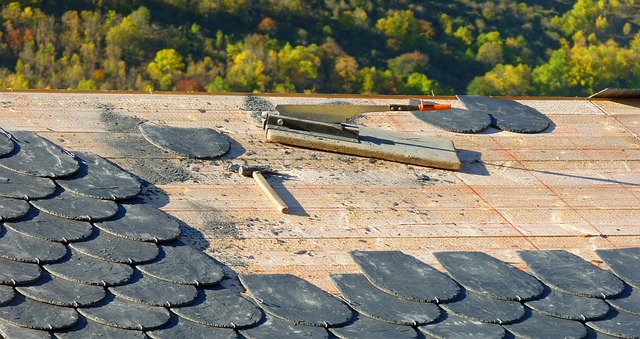Roofer safety protocols are essential for protecting workers and the public from hazards at heights. These include risk assessments, proper PPE usage (like high-quality harnesses), tailored work procedures, adherence to industry standards like OSHA guidelines, regular training, and evaluations. Effective equipment selection, inspection, and usage training, along with best practices, ensure competent and safe performance, minimizing accidents, boosting productivity, and fostering a culture of safety in the roofer industry.
In the realm of construction, roofers often find themselves working at heights, making safety protocols paramount. This article navigates the essential aspects of ensuring safe practices for roofers when working off the ground. We delve into understanding roofer safety protocols, exploring critical equipment and training required for heights work. Additionally, we highlight best practices to foster efficient and secure high-altitude operations, emphasizing the importance of adhering to these guidelines in the world of roofing.
- Understanding Roofer Safety Protocols
- Essential Equipment and Training for Heights Work
- Best Practices for Efficient and Safe Work at Heights
Understanding Roofer Safety Protocols

Roofer safety protocols are paramount in ensuring secure and efficient work at heights. These protocols encompass a comprehensive set of guidelines designed to protect both the workers and the general public from potential hazards associated with rooftop operations. Key aspects include thorough risk assessments, proper use of Personal Protective Equipment (PPE), and adherence to specific work procedures tailored for different roofing materials and structures.
Understanding these protocols involves familiarizing oneself with industry standards and best practices, such as those provided by organizations like the Occupational Safety and Health Administration (OSHA). Regular training sessions, ongoing education, and continuous evaluation of safety measures are crucial in maintaining a safe working environment for roofers. This proactive approach not only minimizes accidents but also enhances productivity and promotes a culture of safety within the industry.
Essential Equipment and Training for Heights Work

When it comes to working at heights, especially for tasks like roof repairs or installations, proper equipment and training are non-negotiable. Roofers need a comprehensive set of tools designed for safety and efficiency. This includes high-quality harnesses that provide secure anchorage and ensure the worker’s safety during movement. Additionally, specialized lanyards and ropes engineered to withstand significant strain are essential to prevent falls and mitigate risks.
Training is equally vital. Effective programs teach roofers how to select, inspect, and use safety equipment correctly. They learn techniques for securing themselves and managing tools while working at elevated heights. Such training also covers risk assessment, emergency procedures, and best practices for maintaining a safe work environment, ensuring that every roofer can perform their duties competently and securely.
Best Practices for Efficient and Safe Work at Heights

When working at heights, whether it’s for construction or maintenance tasks like roofers need to perform, safety should always be the top priority. Implementing best practices ensures that risks are minimized and accidents are prevented. One crucial practice is to use appropriate personal protective equipment (PPE), such as high-quality harnesses and ropes, which are specifically designed for work at heights. Proper training on how to correctly wear and utilize this gear is essential before commencing any tasks.
Regular inspections of the work area and all safety equipment are another critical aspect. This includes checking the integrity of ladders, scaffolds, and other access points to ensure they are secure and stable. Additionally, maintaining clear communication with fellow workers is vital. A simple yet effective system for signaling and coordinating tasks can prevent accidents and ensure everyone is aware of potential hazards present at different heights.
When it comes to working at heights, especially in the realm of roofer tasks, adhering to safety protocols is paramount. By equipping yourself with the essential knowledge, tools, and training, you can ensure a secure and efficient work experience. Implementing best practices not only protects individuals but also enhances productivity on any job site. So, whether navigating a bustling rooftop or exploring unseen heights, always remember: safe work practices are the cornerstone of a professional roofer’s success.
